Amazon Held Advanced, Spectacular Civilizations Prior to European Contact
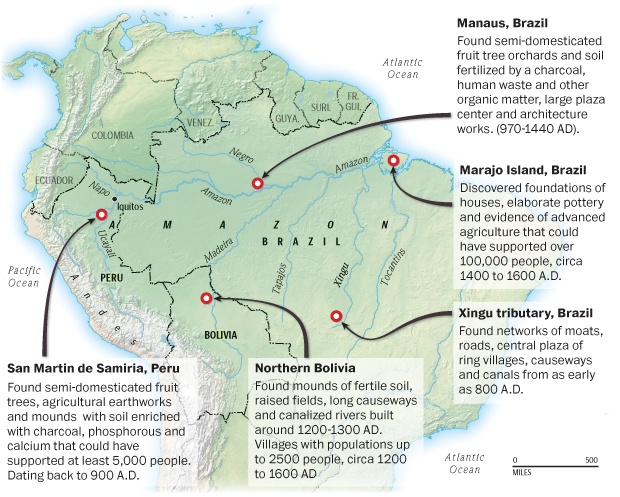
Scientists Find Evidence Discrediting Theory Amazon Was Virtually Unlivable
The Washington Post
September 5, 2010; 7:57 PM
SAN MARTIN DE SAMIRIA, PERU – To the untrained eye, all evidence here in the heart of the Amazon signals virgin forest, untouched by man for time immemorial – from the ubiquitous fruit palms to the cry of howler monkeys, from the air thick with mosquitoes to the unruly tangle of jungle vines…
(more…)
Machu Picchu 100th Anniversary Likely To Lack Yale’s Artifacts
Machu Picchu Centennial Likely To Lack Yale Artifacts
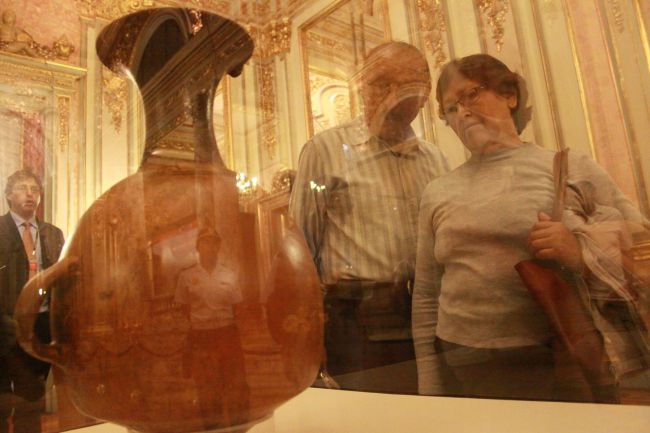
A Peruvian couple admires an Incan aribalo vase in a Lima museum
Yale Daily News
May 13, 2010
With the 100th anniversary of Hiram Bingham’s discovery of the Inca archeological treasure Machu Picchu approaching, Peru’s Chamber of Tourism is preparing to celebrate — but without many of the site’s most precious artifacts, which remain in Yale’s collection…
(more…)
Inca Burial Ground Shows Evidence of Spanish Conquest
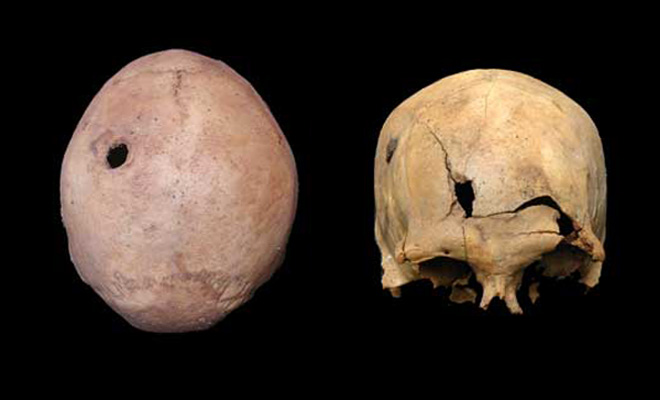
Evidence of Spanish bullet holes in 500-year-old Inca skulls, found at a burial site on the outskirts of Lima, Peru
Inca Skeletons Show Evidence of Spanish Brutality
Science News
April 2, 2010
If bones could scream, a bloodcurdling din would be reverberating through a 500-year-old cemetery in Peru. Human skeletons unearthed there have yielded the first direct evidence of Inca fatalities caused by Spanish conquerors…
(more…)
Oldest City in the Americas in Danger of Being Destroyed by Locals
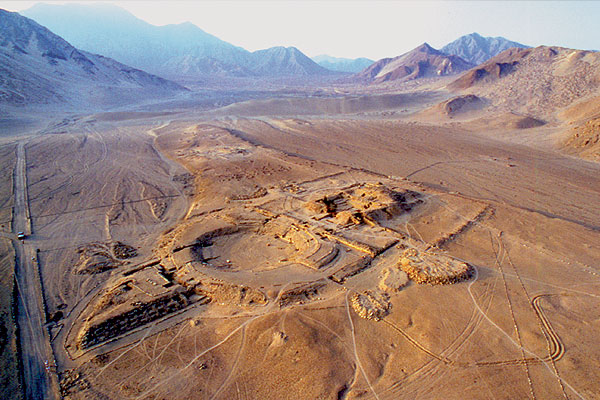
An aerial view of some of the pyramids at Caral, the most ancient city in the New World and located about 160 miles north of Lima, Peru
Authorities to Inspect Archaeological Site of Caral to Verify Alleged Attack
Farmers Have Apparently Invaded one of the Pyramids in the Area of “Era de Pando” to build a Water Reservoir
March 23, 2010
El Comercio (Peru) (translated by Kim MacQuarrie)
Representatives of the Barranca Provincial Prosecutor’s office will carry out an investigation tomorrow at the archaeological site known as “Era of Pando,” a city consisting of 26 buildings belonging to the Caral culture, where farmers are apparently destroying this cultural heritage…
(more…)
Ancient Nazca Civilization Committed Fatal Ecological Error
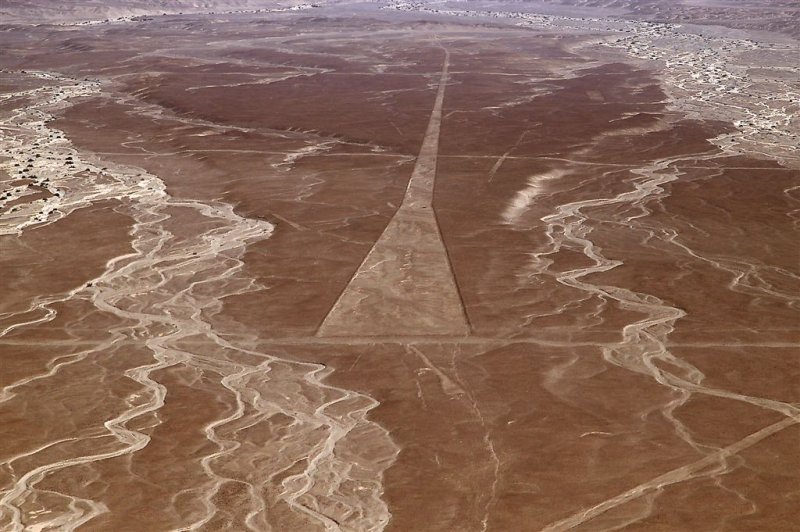
An enormous “Nazca Line” as seen from the air on Peru’s SW desert coast; the Nazca civilization, known for its complex weavings, beautiful pottery, and the “Nazca Lines,” visible only from high above the ground, mysteriously collapsed around the middle of the first millennium, A.D.
Logging Caused Nazca Collapse
BBC News
November 2, 2009
The ancient Nazca people of Peru are famous for the lines they drew in the desert depicting strange animal forms.
A further mystery is what happened to this once great civilization, which suddenly vanished 1,500 years ago….
(more…)
Spanish-Peruvian Explorers Reach Cliff With Image of Incan Rebel King
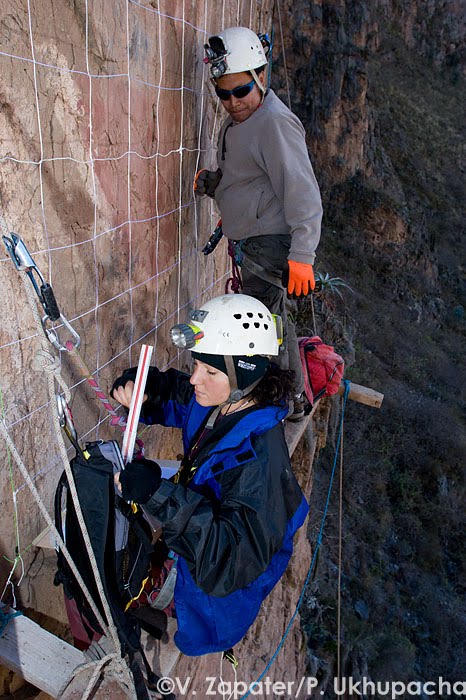
Ukupacha Project Investigators Study Portrait of the Rebel Incan Emperor Manco Inca
Spanish-Peruvian Team Succeed in Reaching Rock Art Wall of [Emperor] Manco Inca II
The painting was completed over 400 years ago on a cliff in the Sacred Valley of the Incas
August 9, 2009
(ANDINA)
(Translation: K. MacQuarrie)
(Note: in 1536, a 19-year-old Incan emperor named Manco Inca rose up against the Spaniards and led a massive rebellion that almost succeeded in wiping Francisco Pizarro and his conquistadors out. The young Inca king later retreated to the rugged area of Vilcabamba, about 90 miles from Cusco, a region from where the Incas carried out guerrilla warfare against the Spaniards for the next 36 years. The last Incan emperor, Tupac Amaru, was beheaded in Cusco in 1572, ending the Inca Empire: KM).
(more…)
Did Hiram Bingham Discover Machu Picchu Artifacts–Or Buy Them?
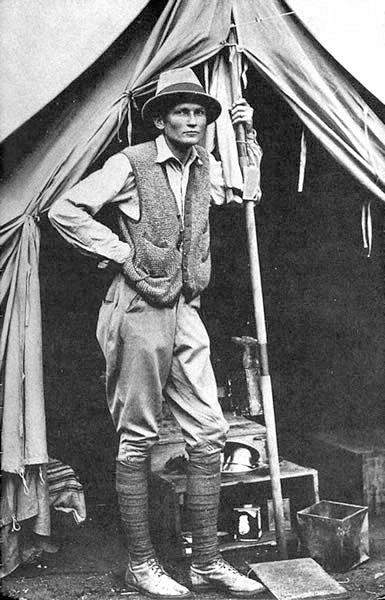
Hiram Bingham at Machu Picchu in 1912
Bingham Didn’t Dig Up The Yale Huacos –He Just Bought Them
August 6, 2009
Caretas
By Nicholas Asheshov
Here in Urubamba Hiram Bingham’s reputation has taken a knock in the run-up to the centennial of the discovery in 1911 of Machu Picchu.
The revisionists are saying that Bingham was not just a persistent explorer but also, frankly, a humbug.
Bingham’s economical use of the truth has been compounded by the poorly-advised refusal of Yale University and its Peabody Museum of Natural History to return, as promised, what Bingham’s Yale expeditions dug up in the Vilcabamba 1912-15.
The Peruvian government is taking Yale to court but they’re not pushing it.
Here’s why. None of the good pieces in the Yale Machu Picchu collection were actually dug up by Yale archaeologists.
(more…)
Ancient Inca Sun Pillars Still Mark June Solstice
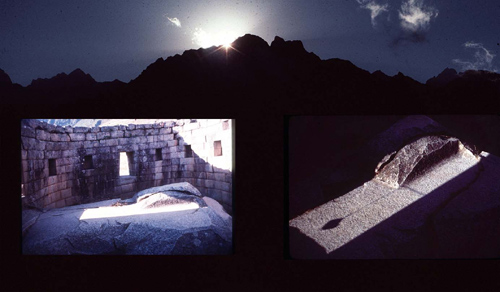
(Above: The Torreón at Machu Picchu is a tower built around a stone that still has a carved groove in it. Once a year, the groove is illuminated as the rising sun shines through one window each June solstice. The window also frames the Pleiades constellation, which was used by the Incas to decide when to plant potatoes. At its height in the early 16th century, the Incas’ 2,500-mile-long empire was littered with celestial observatories, which aided the Incas in the precise sowing and reaping of various crops–KM).
When the Sun Hits the White Granite Boulder, it’s the Solstice
By Nicholas Asheshov
Caretas
On June 21, just over a week from now, the winter solstice, easily the most important day in the ancient Andes, falls due and brilliant rays of sun will be flooding just after dawn through carefully-designed Inca windows onto sharp once-a-year marker stones…
(more…)
1,500-Year-Old Moche Indian Lord’s Tomb Discovered in Peru
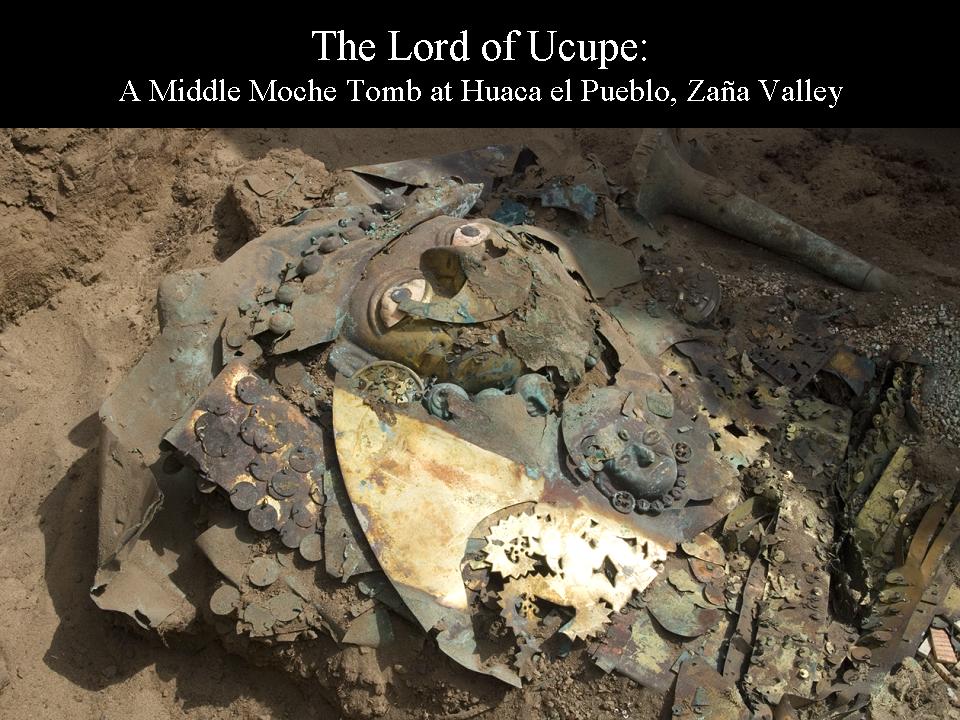
The tomb of the “Lord of Ucupe,” a Moche lord who died in what is now nothern Peru in @ 500 A.D. (photos: Steve Borget)
“King of Bling” Tomb Sheds Light on Ancient Peru
National Geographic News
April 10, 2009
Packed with treasure in the styles of two ancient orders, the 1,500-year-old tomb of the Moche Indian “king of bling” is like no other, according to archaeologist Steve Bourget.
Discovered in Peru at the base of an eroded mud-brick pyramid, the tomb gradually yielded its contents last summer.
Among the finds: 19 golden headdresses, various pieces of jewelry, and two funerary masks, as well as skeletons of two other men and a pregnant woman.
(more…)
Ancient Painting Discovered on Giant Rock at Machu Picchu
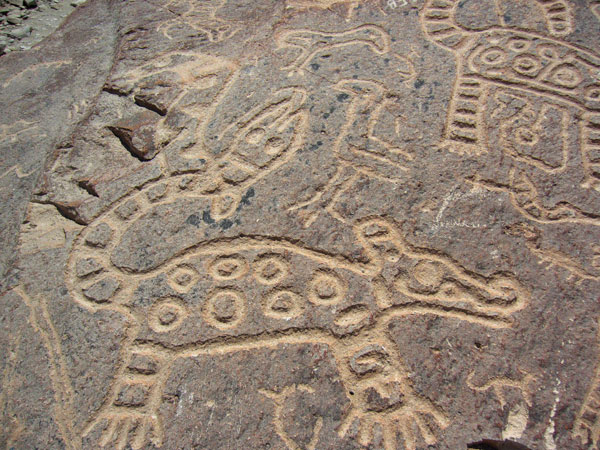
(Note: Rock art in Peru is fairly common, due to the thousands of years that humans have inhabited the area. While images of the presumed, pigment-based Machu Picchu “painting” have not yet been released, above is one of many petroglyphs that exist in the Majes Valley in Southern Peru, about 1oo miles nw of Arequipa. See also map at end of article–KM)
UCA Professor Finds Ancient Rock Painting in Peru
Arkansas Democrat-Gazette
April 17, 2009
CONWAY – A University of Central Arkansas professor said Thursday that he has discovered an ancient rock painting at an Inca burial site in the Peruvian Andes and believes the work could be anywhere from 500 to 2,000 years old.
(more…)









